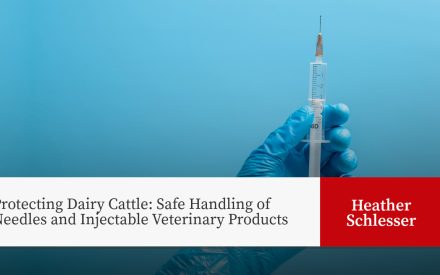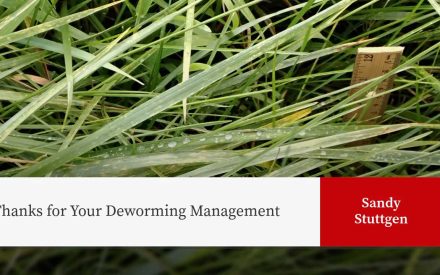Considerations for safety and beef quality assurance
Using proper injection techniques for animal health products, including reproductive hormones, helps ensure products work effectively. In addition, it is important to safely handle animals and health products to protect both farm workers and animals.
Today, a cow’s primary purpose is milk production, but nearly all dairy cattle will have a “second career” producing meat. For this reason, Beef Quality Assurance (BQA) applies to dairy producers just as it does to beef producers. Whenever possible, injections should be placed in economically less important cuts of meat. In cattle, this means the side of the neck and avoiding the hindquarters.
Make sure to read and know the product label, as it contains information on warnings and precautions for the user (human), animal, and any residue warnings for meat and milk. Handlers need to have access to and be aware of where wash areas are located. Wearing nitrile gloves helps protect farm workers handling reproductive hormones.
Safety includes preventing needlestick injuries for workers, keeping needles clean to minimize injection site lesions, selecting the right needle, and replacing needles, to prevent accidental breakage in an animal.
The following factsheet covers the Beef Quality Injection triangle, why it applies to dairy producers, considerations for dairy workers handling needles, and special considerations for workers handling reproductive hormones.
Read the downloadable publication to learn more about handling reproductive hormones and injection placement.

 Protecting Dairy Cattle: Safe Handling of Needles and Injectable Veterinary Products
Protecting Dairy Cattle: Safe Handling of Needles and Injectable Veterinary Products Understanding Liver Flukes in Wisconsin cattle: Lifecycle, Risks, and Control Strategies
Understanding Liver Flukes in Wisconsin cattle: Lifecycle, Risks, and Control Strategies Thanks for Your Deworming Management
Thanks for Your Deworming Management Managing Internal Parasites in Cattle
Managing Internal Parasites in Cattle


